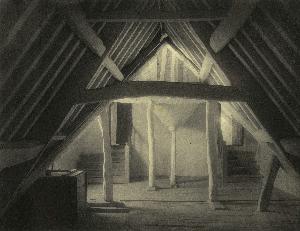Frederick Henry Evans
Frederick Henry Evans;Evans, Frederick H.
Place: London
Born: 1853
Death: 1943
Biography:
Early Life and Career
Frederick H. Evans, a renowned English photographer, was born on June 26, 1853, in London, United Kingdom. He began his career as a bookseller but later transitioned to full-time photography in 1898, adopting the platinotype technique.
Photographic Style and Technique
Evans' photographic style was characterized by his use of platinum printing, which provided an extensive tonal range, non-glossy images, and better resistance to deterioration. This technique suited his primary subject matter: English and French cathedrals. His perfectionism earned him international respect and numerous imitations.
Notable Works and Exhibitions
- Kelmscott Manor: Attics (20 x 15 cm, George Eastman Museum, Rochester, United States, Photograph), a testament to Evans' architectural photography prowess.
- Evans was also an able photographer of landscapes and portraits, with notable subjects including George Bernard Shaw, with whom he frequently corresponded.
- He was made an honorary fellow of the Royal Photographic Society in 1928 and was a member of the Linked Ring photographic society.
Museums and Collections
- The William Morris Gallery, United Kingdom, which houses a collection of Morris's textiles, furniture, wallpaper, stained glass, ceramics, and other decorative arts.
- Samuel Johnson Birthplace Museum, United Kingdom, showcasing the life and works of Samuel Johnson, with artworks reflecting England's rich cultural heritage.
Legacy
Frederick Henry Evans' unparalleled architectural photography has left an indelible mark on the world of art. His adoption of the platinotype technique and his perfectionism have influenced generations of photographers.
- View more works by Frederick H. Evans at https://Wikioo.org/@/Frederick-Henry-Evans
- Discover the William Morris Gallery and its collections at https://Wikioo.org/@@/A@D3C7F7
- Explore the Samuel Johnson Birthplace Museum and its artworks at https://Wikioo.org/@/A@D3BJKF
References
- https://Wikioo.org/@/Frederick-Henry-Evans (Artist Profile)
- https://Wikioo.org/@@/A@D3C7F7 (William Morris Gallery)
- https://Wikioo.org/@/A@D3BJKF (Samuel Johnson Birthplace Museum)


